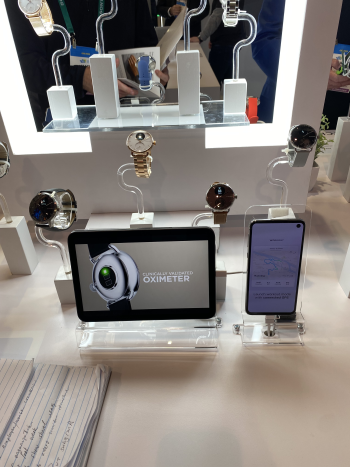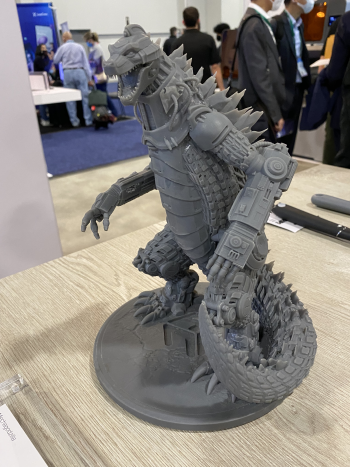I am taking a “glass half-full” impression from CES. Yes, it was a thinner experience than usual. There was swathes of open space in exposition centers. Shuttle buses that are usually standing room only were half-empty. Even the conference sessions did not seem as rich as prior years. But tech and marketplace development did not pause during the pandemic. If anything, market demand increased and new attention to new problems spurred innovation. So, even if the show closed a day early; even if it was less robust than usual; even if I am afraid to see what my face looks like after masking for nine or more hours each day, I am glad I attended and look forward to a “normal” show next year.
In prior years, I have usually identified either a particular product or trend that captivated me. One year, it was a smart cane that not only incorporates fall detection but also tracks gait to give care providers perspective into the user’s overall health progressions. Another year, I focused on “meaningful technology,” i.e., devices or apps that create not game-changing but life-changing experiences for users. This year, two things struck me: (1) The “We’ll be there sooner than we know it” journey to “what comes next”, and (2) What we can expect from AI and how consumers will use it.
Let’s look at some numbers: COVID drove increasing demand for consumer technology in 2021 (these data are provided by Consumer Technology Association, the host of CES). Q1 saw 5% growth; Q2 saw 22% growth; and Q3 saw an astounding 30% increase. And the forces the propelled these increases are still in play. As we have mentioned in several prior posts, we do not expect the pendulum of consumer demand for or attitudes toward technology to return to where they were prior to the pandemic. Schools, workplaces, and healthcare have all incorporated new technology solutions and there is every indication from numerous reports that those changes will stay in the (wait for it) new normal.
Here are some numbers to prove it: 52% of U.S. adults say they are likely to use health tech in the future not only for episodic medical interventions but for ongoing interactions to promote health and wellness. Purchases of consumer technology in the United States increased from 2020 to 2021 in ten major categories, including 4K and smart TVs; 2-in-1 laptop/notebooks; smart doorbells; wireless headphones; and smart sport/fitness equipment. And the drive towards seamless and invisible innovation continues: Withings has created a line of fashion wristwatches that can include a oximeter, take a one-lead ECG, and measure sleep patterns, all with a battery life of 30 days. Withings’ selling point is that its watches are designed to resemble fashion analogue timepieces, rather than tiny tablets. Softmatter creates textiles with active and passive technologies. These include, for example, athletic wear with built-in LED lighting, or sensors to gather biometric data.
AI, machine learning, and VR/AR/MR were also on display at CES. If there was any fear that the robots will overtake us . . . well, a lot of people seem open to some type of assistance. I am not surprised that more than 70% of respondents to a recent survey would be open to AI assistance for house cleaning, nutritional advice, shopping recommendations, diet coaching and crime prevention. I was intrigued that 65% of those surveyed would be open to AI for art/music/book creation (where’s the humanity in that?). I was (as a lawyer) heartened that only 52% of respondents would be open to AI-provided legal advice.
So, where does this leave us?
1. People who added new services and adopted new technology are sticking with it. This bodes well for the tech sector in terms of sales; for the broadband sector in terms of connectivity; and for the jobs sector where there will be increased demand for those who can develop, deploy, sell and service these products.
2. AR/VR/MR will play critical roles in manufacturing and industrial IoT. That means that AR/VR/MR must assume an increasing place in education from at least middle school onward. Of course, how to implement these technologies in age- and educational-appropriate formats will be a question to conquer, but we can simply add that opportunity to the list in sub-paragraph (1), above.
3. We need greater diversification for chip and electronics manufacturing. COVID was a slow-roll disaster that knee-capped supply chains and distributions. It was a slow-motion warning shot across industrial and international bows. We are a natural disaster away from chaos.
4. Connectivity will be king. And if we think about that in terms of Moore’s Law, then areas that lack connectivity will fall further behind the curve, and more rapidly.
So, yes – there was open space at CES, and maybe it was a lull in the usual vibe that pervades the show. But it still showed new tech. It demonstrated increasing demand. And, as always, it inspired important inquiries.




